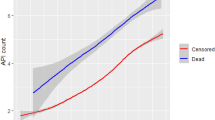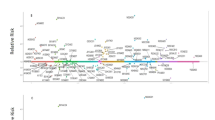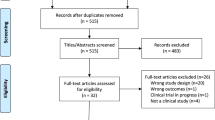Abstract
Introduction:
Orlistat, the first of a new class of drugs for the treatment of obesity, was launched in the UK in December 1998. The prescribing information recommends that treatment with orlistat should be discontinued after 12 weeks if the patient has not achieved a specified loss of weight.
Objective:
To monitor the safety of orlistat prescribed in the primary care setting in England using prescription-event monitoring (PEM).
Methods:
A postmarketing surveillance study using the observational cohort technique of PEM. Patients were identified from dispensed prescriptions issued by primary care physicians for orlistat between December 1998 and November 1999. The outcome data were event reports obtained by sending questionnaires (green forms) to the prescribing doctor at least 6 months after the first prescription for an individual patient. Incidence densities, expressed as number of first reports of an event/1000 patient-months of exposure, were calculated. Significant differences between incidence densities (IDs) for events reported in the 1st month (ID1) and months 2 and 3 (ID2–3) of exposure were regarded as potential signals. Reasons for stopping orlistat were analysed. Follow-up information was requested for selected events and used to assess the causal association with orlistat.
Results:
Green forms containing clinically useful information on 16 021 patients (median age 45 years (interquartile range 35–54); 80.1% females) were received. The events reported most frequently during the 1st month of treatment were ‘not effective’ (639; 4.0% of cohort), diarrhoea (371; 2.3%) and weight loss (230; 1.4%). Twelve clinical adverse events were identified for which ID1 was significantly greater than ID2–3. These included non-specific events (e.g. intolerance, malaise/lassitude, unspecified side effects), weight loss and vaginitis/vulvitis. The remaining events were gastrointestinal in nature and included diarrhoea, pain abdomen, flatulence, nausea/vomiting, rectal discharge, faecal incontinence and ‘gastrointestinal unspecified’ events. A similar pattern of predominately gastrointestinal events was seen for reasons for stopping and suspected adverse drug reactions. Review of selected events for causality revealed 45 events which were assessed as possibly or probably related to orlistat.
Conclusions:
This study shows that orlistat is fairly well tolerated. The safety profile of orlistat was similar to the prescribing information and experience reported in the literature.
This is a preview of subscription content, access via your institution
Access options
Subscribe to this journal
Receive 12 print issues and online access
$259.00 per year
only $21.58 per issue
Buy this article
- Purchase on Springer Link
- Instant access to full article PDF
Prices may be subject to local taxes which are calculated during checkout

Similar content being viewed by others
References
Drent ML, van der Veen EA . Lipase inhibition: a novel concept in the treatment of obesity. Int J Obes Relat Metab Disord 1993; 17: 241–244.
Royal College of Physicians Working Party. Overweight and Obese Patients: Principles of Management with Particular Reference to the Use of Drugs. The Royal College of Physicians: London, 1997.
Fricker J . Balancing the risks of anti-obesity pills. Lancet 1997; 349: 1374.
Roche Products Limited. Orlistat, Summary of Product Characteristics. August 1998.
Hollander P, Elbein SC, Hirsch IB, Kelley D, McGill J, Taylor T et al. Role of orlistat in the treatment of obese patients with type 2 diabetes: A 1-year randomized double-blind study. Diabet Care 1998; 21: 1288–1294.
Sjostrom L, Rissanen A, Andersen T, Boldrin M, Golay A, Koppeschaar HP et al. Randomised placebo-controlled trial of orlistat for weight loss and prevention of weight regain in obese patients. Lancet 1998; 352: 167–172.
Shakir SA . PEM in the UK. In: Mann RD, Andrews E (eds). Pharmacovigilance. John Wiley & Sons Ltd: Chichester, UK, 2002, pp 333–344.
Stephens MDB (ed) Introduction. In: Detection of New Adverse Drug Reactions, 3rd edn, Macmillan Publishers Ltd: Great Britain, 1992, p 17.
Strom BL (ed) Sample size considerations for pharmacoepidemiology studies. In: Pharmacoepidemiology, 2nd edn, John Wiley & Sons Ltd: UK, 1994; 29–38.
Machin D, Campbell MJ, Fayers PM, Pinol APY . Sample Size Tables for Clinical Studies, Table 7.1, Blackwell Science Ltd: Oxford, UK, 1997, pp 143–150.
Machin D, Campbell MJ, Fayers PM, Pinol APY . Sample Sizes for Clinical Studies, Table 7.2, Blackwell Science Ltd: Oxford, UK, 1997, pp 143–153.
International Ethical Guidelines for Biomedical Research Involving Human Subjects. CIOMS/WHO: Geneva, 1993.
Guidelines on the Practice of Ethical Committees in Medical Research involving Human Subjects. Royal College of Physicians of London. August 1996.
Multi-Centre Research Ethics Committees Guidance Notes. October, 19 (Appendix C). 2000. Ref Type: Generic [http://www.corec.org.uk/wordDocs/guideNotes.doc – page 19 Appendix C].
General Medical Council. General Medical Council booklet Confidentiality: Protecting and Providing Information; Frequently Asked Questions Q7, p9, 2004..
Martin RM, Kapoor KV, Wilton LV, Mann RD . Underreporting of suspected adverse drug reactions to newly marketed (‘black triangle’) drugs in general practice: observational study. BMJ 1998; 317: 119–120.
Heeley E, Riley J, Layton D, Wilton LV, Shakir SA . Prescription-event monitoring and reporting of adverse drug reactions. Lancet 2001; 358: 1872–1873.
Roche Products Ltd. Orlistat – Summary of Product Characteristics 24 September 2004.
Hill JO, Hauptman J, Anderson JW, Fujioka K, O'Neil PM, Smith DK et al. Orlistat, a lipase inhibitor, for weight maintenance after conventional dieting: a 1-year study. Am J Clin Nutr 1999; 69: 1108–1116.
Bray GA, Greenway FL . Current and potential drugs for treatment of obesity. Endocr Rev 1999; 20: 805–875.
Mikhail N, Golub MS, Tuck ML . Obesity and hypertension. Prog Cardiovasc Dis 1999; 42: 39–58.
Persson M, Vitols S, Yue Q-Y . Orlistat associated with hypertension. BMJ 2000; 321: 87.
Huber MH . Roche concludes that there is no evidence of a causal association (letter). BMJ 2001; 322: 110.
Persson M, Vitols S, Yue Q-Y . Author's reply (letter). BMJ 2001; 322: 110.
Padwal R, Li SK, Lau DC . Long-term pharmacotherapy for overweight and obesity: a systematic review and meta-analysis of randomized controlled trials. Int J Obes Relat Metab Disord. 2003; 27: 1437–1446.
Leung WY, Neil Thomas G, Chan JC, Tomlinson B . Weight management and current options in pharmacotherapy: orlistat and sibutramine. Clin Ther 2003; 25: 58–80.
Torgerson JS, Hauptman J, Boldrin MN, Sjostrom L . Xenical in the prevention of diabetes in obese subjects (Xendos) study: a randomized study of orlistat as an adjunct to lifestyle changes for the prevention of type 2 diabetes in obese patients. Diabet Care 2004; 27: 155–161.
Acknowledgements
We thank the very many GPs who have, without payment participated in this study. We also thank the Prescription Pricing Authority, The Office for National Statistics and the Regional Health Authorities of the UK National Health Service, without whose support prescription-event monitoring (PEM) could not be undertaken. We also acknowledge the help of Lesley Flowers in typing this document and Shayne Freemantle in the preparation of the tables and data. The Drug Safety Research Unit (DSRU) is a medical charity, which receives unconditional grants from many pharmaceutical companies. The DSRU has received such grants from Roche, who have no control over the decision to undertake a study, or the conduct or reporting of studies. Saad Shakir has received lecturing and consultancy fees from Roche unrelated to this product. Nayan Acharya is presently working with Eli Lilly and Company.
Author information
Authors and Affiliations
Corresponding author
Rights and permissions
About this article
Cite this article
Acharya, N., Wilton, L. & Shakir, S. Safety profile of orlistat: results of a prescription-event monitoring study. Int J Obes 30, 1645–1652 (2006). https://doi.org/10.1038/sj.ijo.0803323
Received:
Revised:
Accepted:
Published:
Issue Date:
DOI: https://doi.org/10.1038/sj.ijo.0803323
Keywords
This article is cited by
-
Implications of agar and agarase in industrial applications of sustainable marine biomass
Applied Microbiology and Biotechnology (2020)
-
Unplanned medication discontinuation as a potential pharmacovigilance signal: a nested young person cohort study
BMC Pharmacology and Toxicology (2014)
-
Diabetic diarrhea
Current Gastroenterology Reports (2009)
-
The Safety Profiles of Orlistat and Sibutramine: Results of Prescription‐Event Monitoring Studies in England
Obesity (2007)



